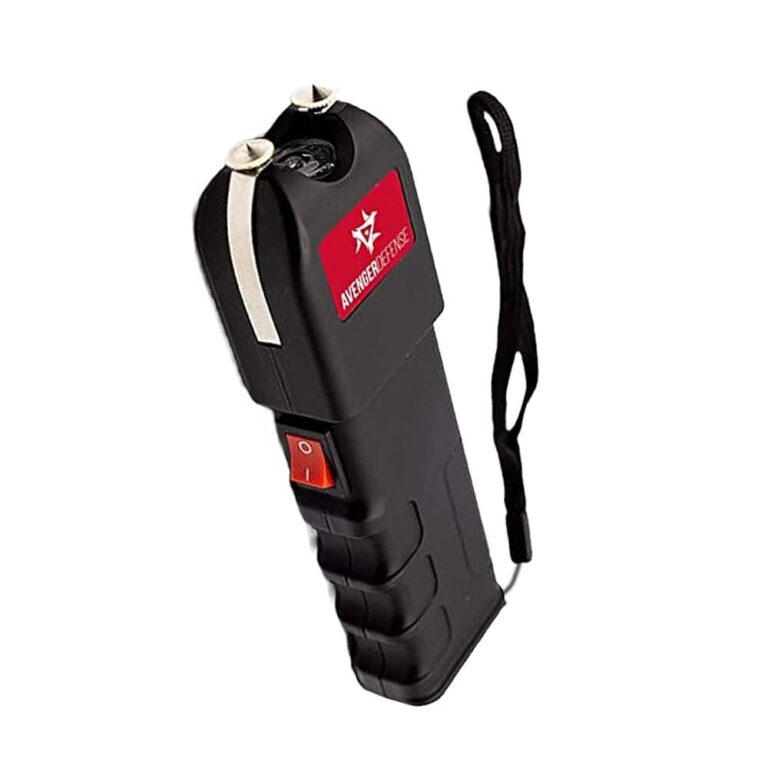Table of Contents
- Choosing Durable Cases and Holsters for Optimal Drop Protection
- Implementing Shock Absorbing Materials to Minimize Impact Damage
- Best Practices for Handling and Storing Your Stun Gun Safely
- Routine Maintenance and Inspection to Detect and Prevent Damage
- Closing Remarks
Choosing Durable Cases and Holsters for Optimal Drop Protection
When selecting a case or holster for your stun gun, prioritize materials engineered to absorb shocks and prevent damage from unexpected falls. High-grade polymers, reinforced nylon, and ballistic-grade fabric are excellent choices, offering a robust barrier that resists cracks and abrasions. Look for cases designed with impact-resistant padding, such as EVA foam or gel inserts, which cushion your device by dispersing the force of impact across a wider area. Additionally, consider cases that feature raised edges or reinforced corners to further shield vulnerable parts of your stun gun.
Functionality should go hand-in-hand with durability. A holster with secure locking mechanisms can prevent accidental drops during transit or rapid deployment scenarios. Features like adjustable belt loops and retention straps ensure the device stays firmly in place, even during vigorous movement. For those who prioritize convenience without sacrificing safety, some models offer quick-release features paired with tough, rugged exteriors. When shopping, focus on these qualities to maintain your stun gun’s integrity, extending both its lifespan and reliability.
- Shock-absorbing padding materials
- Reinforced edges and corners
- Secure locking or retention systems
- Weather-resistant coatings
- Ergonomic designs that prevent drops
Implementing Shock Absorbing Materials to Minimize Impact Damage
When it comes to protecting your stun gun, integrating shock-absorbing materials into its housing or carrying case is crucial. These materials, such as silicone, rubber, or specialized foams, act as cushions that absorb and dissipate the energy generated during a drop or collision. This not only reduces the risk of internal component damage but also helps maintain the device’s overall functionality. Opt for materials that offer a perfect balance between flexibility and durability to ensure maximum impact resistance without adding unnecessary bulk.
To enhance protection, consider adopting the following solutions:
- Foam-lined cases that snugly hold the stun gun, preventing movement and sudden jolts.
- Shock-absorbing grips or sleeves that provide an extra layer of protection and improve handling.
- Reinforced corners with rubber bumpers on cases or holsters to protect vulnerable points from direct hits.
- Multi-layered designs combining hard exteriors with soft inner linings to offer comprehensive defense against impacts.
Best Practices for Handling and Storing Your Stun Gun Safely
To ensure your stun gun remains in optimal working condition, it’s crucial to implement proper handling techniques. Always hold your device firmly with a secure grip to prevent accidental drops, which can cause internal damage or malfunction. Avoid exposing the stun gun to extreme temperatures or direct sunlight for extended periods, as this can affect its battery life and overall durability. When not in use, consider using a shock-absorbent holster or protective case designed specifically for stun guns. These accessories provide a cushion against impacts and minimize scratches or dents from everyday carry.
Follow these essential tips to safeguard your stun gun:
- Store it in a padded compartment away from heavy objects.
- Keep it dry and clean-moisture can corrupt internal electronics.
- Regularly inspect the casing and buttons for signs of wear or damage.
- Recharge the battery according to manufacturer recommendations to avoid power loss.
By adopting these best practices, you enhance the longevity and reliability of your stun gun, making sure it’s ready when you need it most.
Routine Maintenance and Inspection to Detect and Prevent Damage
To keep your stun gun in optimal condition, it’s essential to adopt a regular routine of maintenance and inspection. Start by visually examining the device for any signs of physical wear such as cracks, dents, or loose parts. Pay special attention to the electrode tips and battery compartment-any corrosion or deformation here can significantly reduce performance. Cleaning the stun gun with a soft, dry cloth after each use will help prevent buildup that could interfere with functionality, while ensuring the contacts remain free of debris preserves the integrity of the electrical discharge.
Incorporate these simple checks as part of your regular routine:
- Check the stun gun for any unusual sounds during activation tests, which might indicate internal damage.
- Ensure the safety switch and trigger mechanism function smoothly without sticking.
- Inspect battery connections and replace batteries promptly if power is weak or inconsistent.
- Store the device in a padded case or designated holder to minimize the risk of accidental drops.
Closing Remarks
Protecting your stun gun from drops and impacts is essential to ensure it remains reliable and ready when you need it most. By investing in a quality protective case, using proper handling techniques, and regularly inspecting your device for any signs of damage, you can extend the lifespan of your stun gun and maintain its effectiveness. Remember, a little extra care goes a long way in safeguarding your personal safety tool. Stay prepared, stay protected!Check Our Other Blogs
- StunGun – Your Trusted Source for Stun Guns, Laws, and Self-Defense Tips
- PepperSprayLaws – Your Trusted Resource for Pepper Spray Information
- StunGunLaws – Your Trusted Guide to Stun Gun Legality and Safety



